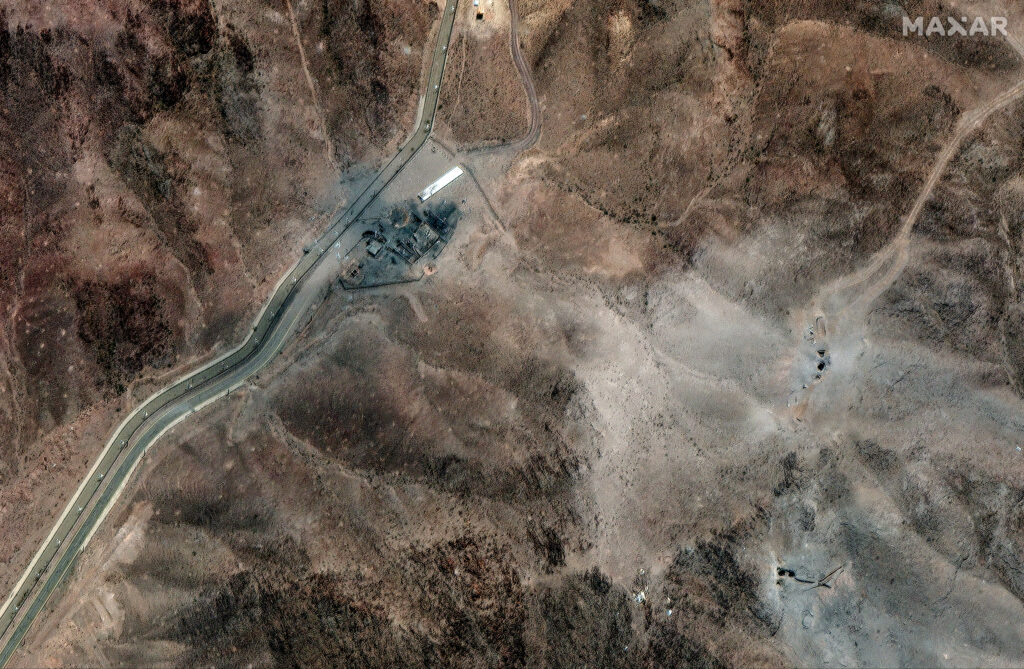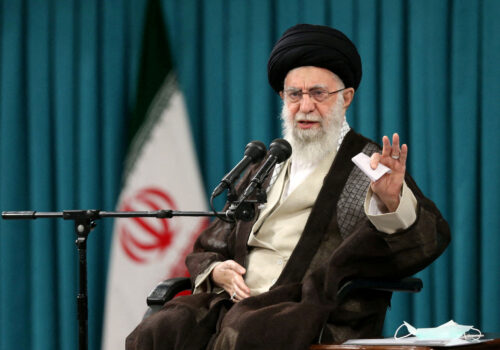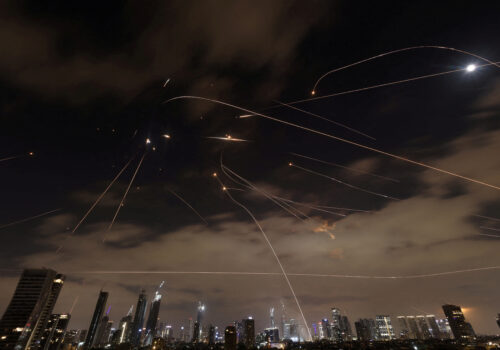As the Israel-Iran war gives way to an uneasy cease-fire, the overriding question of whether the US-Israeli military offensive will prove a strategic success largely hinges on the fate of a sprawling nuclear-enrichment facility buried deep within a mountain.
In support of Israel’s objective to thwart Iran’s development of nuclear weapons, the United States bombed that site, the Fordow Fuel Enrichment Plant, along with Natanz (a uranium-enrichment facility that Israel had already targeted) and Isfahan (a uranium-conversion facility that Israel had also previously attacked) this past weekend.
Of the targeted facilities, Fordow is probably the most heavily fortified and most difficult to destroy. The site, which produces and stores highly enriched uranium (HEU), is built some eighty to one hundred meters underground and shielded by reinforced concrete to protect it from most conventional airstrikes—an effort informed by the lessons Iran drew from witnessing Israel destroy other nuclear facilities in the Middle East. Prior to the war, Iran reportedly had around two thousand centrifuges operating at Fordow, including advanced IR-6s, of which some 350 were enriching uranium up to 60 percent—a concerning level because there is no civilian justification for such a high level of enrichment.
There have been conflicting reports about the amount of damage the strikes did to Fordow. According to US Chairman of the Joint Chiefs of Staff Dan Caine, “initial battle damage assessments indicate that all three sites sustained extremely severe damage and destruction.” Moreover, in the view of Rafael Grossi, the United Nations’ nuclear chief, “Given the explosive payload utilized and the extreme[ly] vibration-sensitive nature of centrifuges, very significant damage is expected to have occurred.”
But it remains unclear whether Tehran, anticipating an attack on Fordow, took steps to minimize the damage to its nuclear program such as moving some HEU to another location or attempting to block the facility’s access tunnels and ventilation shafts. One initial US intelligence assessment reportedly found that the US attack did not collapse the underground buildings at Fordow and that Iran moved out much of its HEU before the strikes, in which case the military operation only set back Tehran’s nuclear program by a few months. (The White House has characterized this assessment as “flat-out wrong.”)
The condition of Fordow will have a direct impact on the likelihood of Iran giving up its nuclear program versus resuming its pursuit of nuclear weapons, if not actually acquiring these weapons, after the war. Below are three scenarios for what could come next depending on what we learn about the true damage to the site.
Scenario 1: Fordow and its highly enriched uranium are diminished but still usable
The United States targeted Fordow using GBU-57 massive ordnance penetrator bombs, the munition that had the best chance to penetrate the underground facility. However, if the attack only partially destroyed Fordow, or if Iran was able to salvage some of its HEU, Tehran is unlikely to agree to give up its nuclear program absent follow-on attacks against it.
Iran has pursued a nuclear capability since even before the Islamic Republic came to power in 1979, and an indigenous nuclear program is bound up in conceptions of historic Persian greatness, national pride, and resistance to outside interference. Moreover, the clerical regime under Supreme Leader Ali Khamenei has a long history of pushing back against challenges rather than pragmatically dealing with them.
Consider a scenario in which some of the cascade halls—the rooms housing the centrifuges, connected in a specific sequence to gradually increase the concentration of the fissile isotope—within the underground facility are still functional. In that case, the regime could decide that it has withstood the conventional might of Israel and the United States, and again seek to position itself at the threshold of obtaining nuclear weapons—or even dash to a weapon. The chances of this outcome rise further if elements of Iran’s programs to turn weapons-grade nuclear material into a weapon and deliver that weapon similarly survived the combined Israel-US assault. (One caveat: Any postwar Iranian activity at Fordow, or other targeted sites, is likely to be easily detected by other countries.)
If the cascade halls are damaged and not functional, Tehran might be forced to accept negotiated restrictions on its nuclear program, as it would not be able to resume uranium enrichment quickly, at least not at any of the targeted facilities. But if elements of the nuclear program survived the strikes, probably nothing short of endangering the regime itself would cause Tehran’s present leaders to permanently abandon decades of commitment to an indigenous nuclear capability.
A partially functional Fordow is likely to trigger no more than a pause in Iran’s nuclear program and the conflict over it. Assuming the nature of the Iranian regime and Israeli military doctrine remain the same, future Israeli attempts to attack a continued Iranian program may be inevitable, whether or not a future US administration elects to participate in those efforts.
Scenario 2: Fordow is fully destroyed, with none of its highly enriched uranium surviving
Alternately, if Fordow, including its cascade halls, has suffered sufficient damage to make it virtually unusable without extensive reconstruction, and Tehran was not able to move any HEU to alternate locations ahead of the US strikes, Iran would be compelled to give up its nuclear program in negotiations—particularly if in return it were to receive guarantees about regime security, relief from economic sanctions, and ways for Iran to maintain the civilian benefits of nuclear power.
Iranian leaders likely would calculate that they cannot benefit from holding out in nuclear talks because it would take many years to restore their nuclear program, particularly if their missile systems and facilities for weaponizing nuclear material have also been severely damaged. Plus, as mentioned above, any attempted reconstruction at Fordow would be quite visible, which in turn could prompt Israeli or US forces to revisit the idea of attacking it.
However, given the longstanding Iranian commitment to an indigenous nuclear capability, substantial monitoring by the International Atomic Energy Agency (IAEA) may be necessary to ensure that, after the heat is off, Tehran does not covertly resume its nuclear program. The regime may consider such a resumption difficult in the immediate aftermath of the program’s destruction but easier to execute and conceal in the future. Iran likely retains the expertise to move more quickly a second time.
Scenario 3: Fordow remains largely functional, whether or not highly enriched uranium was relocated
While this is the least likely of the three scenarios, Fordow could be mostly intact. Perhaps Iranian pre-attack preparations—such as burying the ground-level entrances to the access tunnels or ventilation shafts—somehow were more effective than anticipated. Or the GBU-57s were less effective than predicted.
In the event the critical underground portions of Fordow are largely unscathed, despite the destruction of its above-ground infrastructure, the Iranian regime may become convinced that conventional weapons cannot damage the facility enough to endanger the country’s nuclear-enrichment program.
Such an outcome would have several consequences. First, Iran would retain the uninterrupted capability to enrich uranium to a high level. Second, Israeli Prime Minister Benjamin Netanyahu and his successors would agitate for further military action against Iran and possibly attempt to obtain a more advanced bunker-buster munition so that Israel can finish the job of destroying Fordow itself. Third, the region would not benefit from enhanced postwar stability because the Iranian nuclear program would essentially continue.
A fourth consequence of Fordow surviving US bombardment would be that the Iranians would seek to ensure that any of their future nuclear facilities are just as protected from aerial assault as Fordow is, rendering additional attacks against Iran’s nuclear program more difficult. Near Natanz is an underground facility built into Kūh-e Kolang Gaz Lā, also known as Pickaxe Mountain, and discovered in 2024. It is deeper than Fordow, its precise purpose remains unexplained, and international inspectors have never visited it. “While Fordow is thought to have two tunnel entrances, Pickaxe has at least four,” the Financial Times reported this month, “making it harder to seal off entrances by bombing. Its underground halls also have more floorspace.”
Many of Iran’s nuclear facilities started out as covert and only became known years later. It would be surprising if Iran, as committed as it is to an indigenous nuclear capability, kept its entire program at facilities that were known on the eve of the war. Moreover, Tehran has, in the past, sanitized and partially demolished nuclear sites prior to IAEA inspections. As some of these—Lavisan-Shian, Varamin, and Turquzabad, for example—were not targeted in recent air strikes, it is conceivable that they may have been resurrected for use, or could be in the future.
In this scenario, Tehran would be highly unlikely to relinquish its nuclear program in negotiations. It instead could revive its efforts to move to the brink of possessing nuclear weapons by seeking to reconstruct or resume other features of its program, including missile-delivery systems and facilities for weaponizing nuclear material.
With his country’s enrichment capability mainly preserved, Iran’s supreme leader may also elect to break out to a nuclear bomb and detonate it to demonstrate to adversaries that Iran has joined the nuclear-weapons club and to deter would-be future attackers with the country’s presumed capacity for nuclear retaliation. The ultimate result, in other words, could be the very scenario that prompted Israel and the United States to target Fordow in the first place.
Amir Asmar is a nonresident senior fellow with the Scowcroft Middle East Security Initiative at the Atlantic Council’s Middle East programs. He previously served as a senior Middle East analyst in the US Department of Defense, including as the defense intelligence officer for the Middle East and North Africa from 2010 to 2017.
Further reading
Sun, Jun 22, 2025
Trump made the right call. Will Khamenei do the same?
New Atlanticist By William F. Wechsler
The Iranian regime is in a fundamentally weak position, and it should leap at this last opportunity to save itself.
Mon, Jun 16, 2025
Twenty questions (and expert answers) on the Israel-Iran war
MENASource By
The escalation between Israel and Iran has raised many important questions about a region already facing crises on multiple fronts.
Sat, Jun 14, 2025
Israel’s Iran strike provides a historic chance for Middle East realignment
Inflection Points By Frederick Kempe
History will remember this moment less for the Israeli strikes themselves and more for what follows.
Image: A satellite image shows new airstrike craters on the perimeter of the Fordow Fuel Enrichment Facility, amid the Iran-Israel conflict, near Qom, Iran, June 24, 2025. Maxar Technologies/Handout via REUTERS




